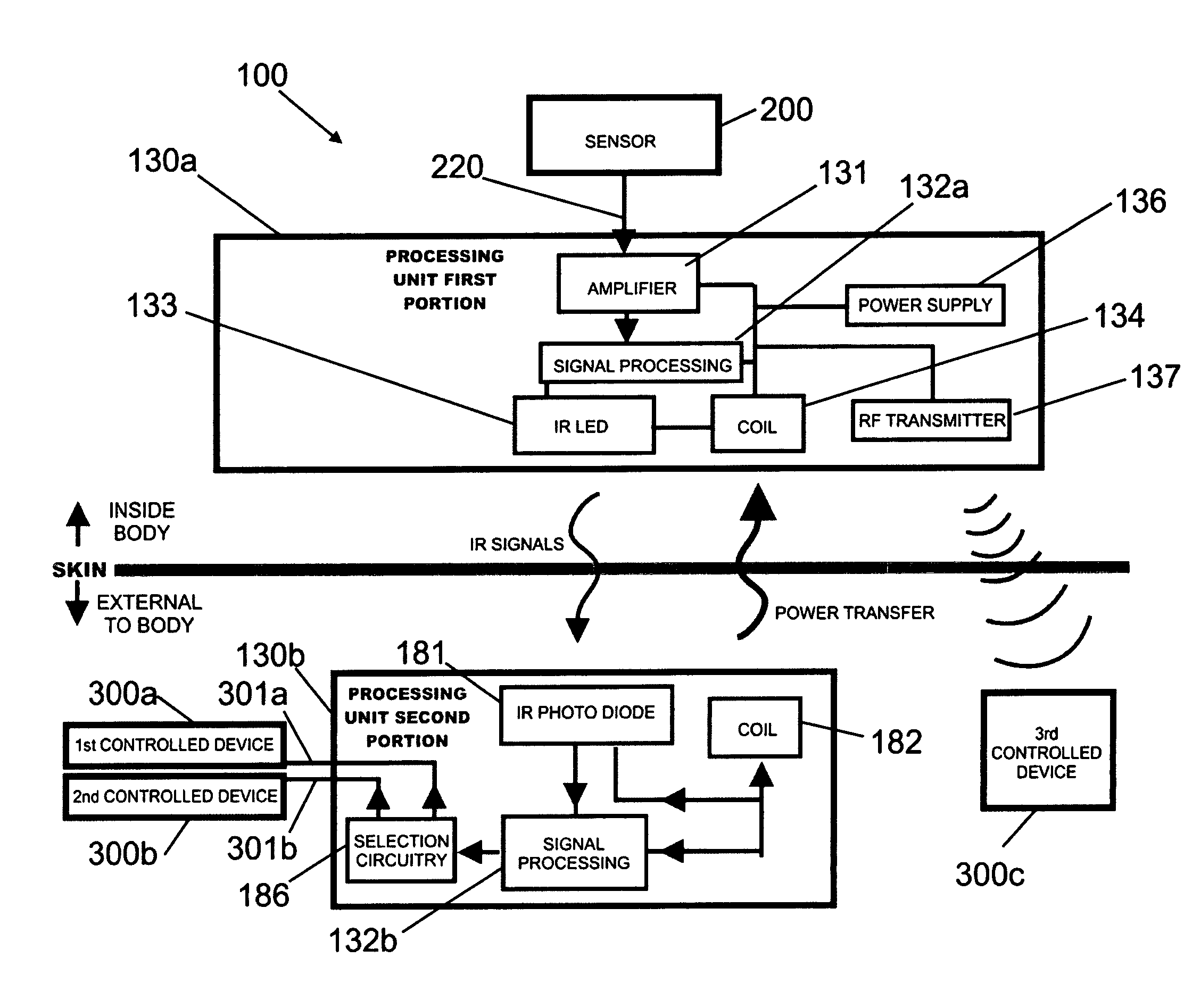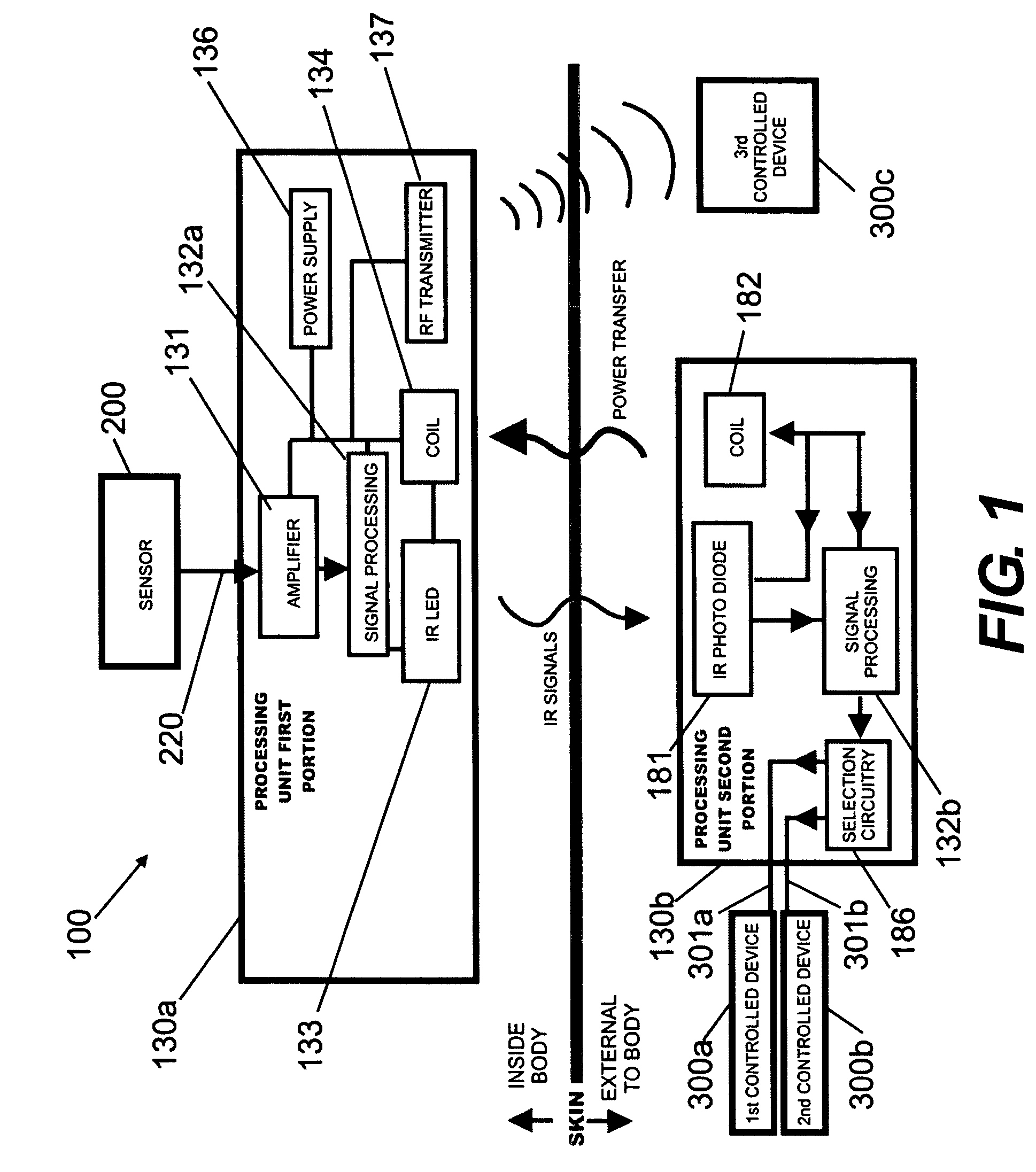Biological interface system
a biochemical interface and system technology, applied in the field of biochemical interface systems, can solve problems such as major problems such as the inability to identify and obtain stable electrical signals of adequate amplitude, and the degradation of the system performan
- Summary
- Abstract
- Description
- Claims
- Application Information
AI Technical Summary
Benefits of technology
Problems solved by technology
Method used
Image
Examples
Embodiment Construction
[0002] 1. Field of the Invention
[0003] The present invention relates to biological interface systems that include one or more devices controlled by processed multicellular signals of a patient. A processing unit produces a control signal based on multicellular signals received from a sensor comprising multiple electrodes. More particularly, the system includes numerous components to provide enhanced utility and improved safety.
[0004] 2. Description of Related Art
[0005] Biological interface devices, for example neural interface devices, are currently under development for numerous patient applications including restoration of lost function due to traumatic injury or neurological disease. Sensors, such as electrode arrays, implanted in the higher brain regions that control voluntary movement, can be activated voluntarily to generate electrical signals that can be processed by a biological interface device to create a thought invoked control signal. Such control signals can be used ...
PUM
 Login to View More
Login to View More Abstract
Description
Claims
Application Information
 Login to View More
Login to View More - R&D
- Intellectual Property
- Life Sciences
- Materials
- Tech Scout
- Unparalleled Data Quality
- Higher Quality Content
- 60% Fewer Hallucinations
Browse by: Latest US Patents, China's latest patents, Technical Efficacy Thesaurus, Application Domain, Technology Topic, Popular Technical Reports.
© 2025 PatSnap. All rights reserved.Legal|Privacy policy|Modern Slavery Act Transparency Statement|Sitemap|About US| Contact US: help@patsnap.com



